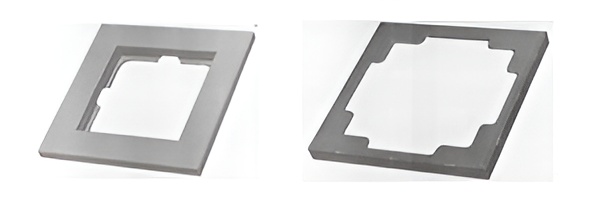Technology | (Not) Paying attention to detail –Oslo District Court clarifies the scope of protection for functional designs

Design of electrical equipment
In the case at hand, ELKO claimed that SG Armaturen’s electrical installation products, such as light switches and sockets, infringed upon ELKO’s registered design rights, cf. Section 9 of the Norwegian Design Act (Art. 12 cf. Art 9 Directive 98/71/EC). Based on its infringement argument, Elko also requested that SG’s design registrations should be declared partially invalid, cf. Section 25 of the Norwegian Design Act (Art. 11 Directive 98/71/EC). In addition, Elko submitted claims of unlawful imitation of its products and breach of good business practices under Sections 30 and 25 of the Norwegian Marketing Control Act. SG on the other hand refuted all claims and subsequently disputed the validity of Elko’s design rights, due to a lack of novelty and individual character, cf. Section 3 of the Norwegian Design Act (Arts. 4 and 5 Directive 98/71/EC).

(Left: Extract of Elko’s design registration no 78840, Right: SG Armaturen’s light switch)
With respect to the question of whether SG’s products infringed upon Elko’s design rights, the court assessed whether SG’s products give the same overall impression as Elko’s registered design, as assessed from the perspective of an informed user.
The court explained that SG’s products are installation materials for distribution and control of electrical power which are typically sold to professional electric installers, but which can in principle be purchased by anyone. The court held, with reference to C-281/10 PepsiCo, that the informed user may be both the end-user of a product or a wholesaler or other actor in the supply chain. The court considered that the informed user of electrical installation products may be a private consumer, a property developer or an electrician who uses the products within the course of their business activities.
When comparing the products and designs in question, the court found the products marketed and sold by SG gave the informed user a different overall impression and therefore did not infringe upon Elko’s design rights. On this background, the court upheld the validity of SG’s registered design. The court also rejected Elko’s claims under the Norwegian Marketing Control Act.
The court noted that the scope of protection of a design right excludes features that are determined by technical function or constitute generic forms. Interestingly, the court emphasized that the existence of a longstanding and widespread minimalistic design trend in the design of electrical equipment has saturated the market with nearly identical products marketed by various manufacturers. These factors resulted in a narrow scope of protection of Elko’s designs and led to the finding that the overall impression of the products and the designs in question differed enough to rule out infringement claims.
CJEU case C 472/21
The court also Confirmed a point which was more recently discussed in CJEU case C 472/21namely design features of complex products which are not visible during normal use of the product. Pursuant to Section 4 of the Norwegian Design Act (Art. 3 Directives 98/71/EC), features of complex products which are not visible during the end-users’ normal use of the complex product cannot be taken into account when assessing the overall impression of a design The court considered that normal use of electrical installation products takes place when the components of the products are mounted, and the product is installed in the end-users’ home. Hence, any similarities between Elko’s and SG’s products that were not visible during normal use, such as the insides or backsides of frames of the light switches and sockets, were disregarded in the assessment of potential infringement, cf. Section 4 of the Norwegian Design Act.

(Extracts from Elko’s design registration no. 78840)
With respect to the validity of Elko’s design registration, the court held that there was no need to assess the validity of Elko’s design rights, as SG’s invalidity claim was merely filed in defense to Elko’s infringement claim. Neither party has appealed the decision of the District Court and hence this judgment is final.
The CJEU judgment, which concerned a registered design for the underside of a bike saddle, confirms that a complex product is a product which consists of components which may be replaced, permitting disassembly and re-assembly of components which are necessary for the normal use of the complex product. The CJEU judgement did not conclusively determine what precisely constituted normal use (Does falling from the bike and looking at the underside of the saddle constitute normal use?), but did clarify that normal use is not restricted to the principal use of the product, i.e. riding a bicycle and getting on and off the bicycle, but also includes acts which may reasonably be carried out during such use, including those which may be performed before or after the product has fulfilled its principal function, such as storage and transportation of that product. However, the CJEU judgement confirms that normal use only takes place when the component parts are mounted, meaning that the assessment of the visibility of features of component parts must disregard features which are only visible before the component part is mounted.

Extract from German design registration no. 402011004383, as referred in case C 472/21
Conclusion
While both judgments certainly provide further clarity on the factors that affect the scope of protection of design rights, it is still not entirely clear what the concept of the end-users’ normal use entails. Both judgements reaffirm that details remain important in design cases, unless you cannot see them.
